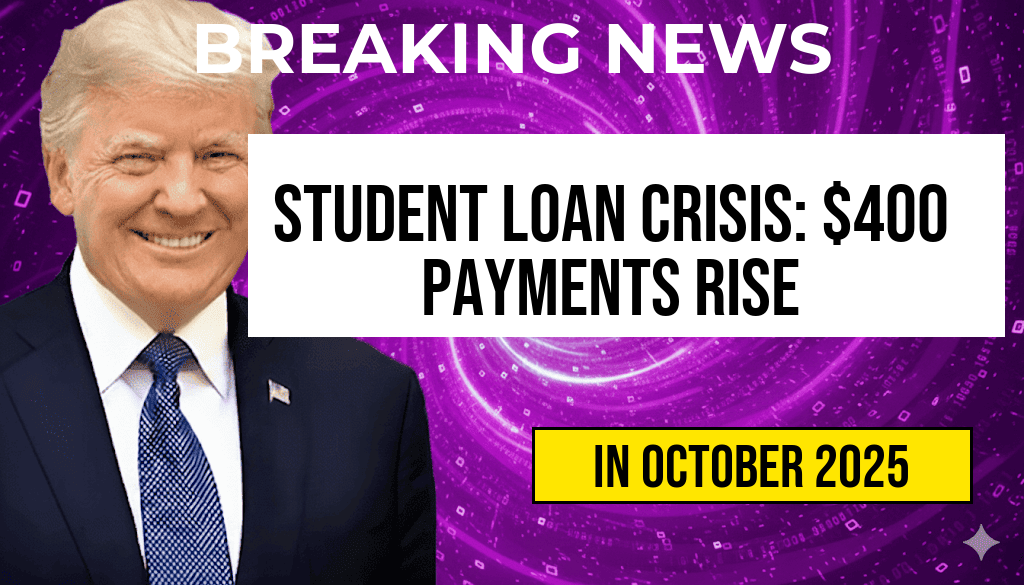Millions of student loan borrowers across the United States are facing a potential increase of up to $400 in their monthly payments as new repayment policies take effect. This shift comes amid ongoing debates over the sustainability of student debt relief programs and the broader economic impact of rising education costs. Borrowers with variable-rate loans, particularly those who entered repayment during the pandemic, could see the most immediate effects, prompting concerns over financial stability for many households. The change is driven by adjustments in interest rates and the expiration of temporary relief measures, which historically have provided temporary respite from mounting debt burdens. As policymakers and borrowers grapple with the implications, understanding who will be affected first and how these changes unfold remains critical for millions navigating their financial futures.
Understanding the Change in Monthly Student Loan Payments
The Root Causes of the Increase
The upcoming rise in monthly payments is primarily linked to the expiration of pandemic-era relief measures and adjustments in interest rates tied to federal student loans. During the COVID-19 pandemic, federal student loan payments were paused, and interest charges were suspended, providing significant relief to borrowers. With the Biden administration’s pause ending, many borrowers now face the resumption of payments, but with added interest accruing at pre-pandemic levels or higher, depending on the loan type and terms.
Additionally, the Federal Reserve’s recent interest rate hikes have influenced variable-rate federal loans, leading to higher interest costs over the life of the loans. For borrowers with loans tied to the variable rate, even modest increases in interest can significantly amplify monthly payment obligations, sometimes by hundreds of dollars.
Who Will Be Affected First?
While all federal student loan borrowers will eventually feel the impact, certain groups are expected to face the initial and most substantial increases:
- Recent borrowers with variable-rate loans: Those who entered repayment during or after the pandemic are most vulnerable, as their interest rates are often tied to market rates and can adjust periodically.
- Borrowers with high debt-to-income ratios: Individuals carrying large balances relative to their earnings will see a more pronounced effect on their budgets.
- Delinquent or near-delinquent borrowers: Those already struggling to make payments may find their financial situations worsened, increasing the risk of default.
Impact on Borrowers and the Broader Economy
Financial Strain and Household Budgets
For many, an additional $400 per month could mean cutting back on essentials such as housing, groceries, or healthcare. Some may be forced into debt or delay major life decisions, including homeownership or starting a family. The ripple effects could dampen economic growth, especially if a significant portion of the population reduces discretionary spending.
Potential Policy Responses and Relief Options
To mitigate the impact, policymakers are exploring various approaches, including income-driven repayment plans, debt forgiveness programs, and potential extensions of temporary relief measures. The Department of Education has indicated that borrowers should review their repayment options and consider enrolling in income-based plans if they face difficulty managing higher payments (source).
Key Data Points and Future Outlook
| Borrower Group | Current Estimated Increase | Primary Factors |
|---|---|---|
| Variable-rate borrowers (post-2020) | $200–$400 | Interest rate adjustments, loan origination date |
| Fixed-rate borrowers | $50–$150 | Interest rate resets, remaining loan balance |
| High debt-to-income ratio borrowers | Variable, often exceeding $300 | Loan size relative to income, repayment plan type |
Analysts warn that without intervention, the cumulative effect of increased payments could lead to higher default rates and financial instability among vulnerable populations. The Congressional Budget Office estimates that the student loan debt total exceeds $1.7 trillion, underscoring the scale of potential economic repercussions.
The Path Forward for Borrowers and Policymakers
Strategies for Borrowers
- Review repayment options regularly through the Federal Student Aid website.
- Consider switching to income-driven repayment plans if monthly payments become unmanageable.
- Explore options for loan consolidation or refinancing where applicable, though federal protections may be limited in refinancing scenarios.
Policy Considerations
Legislators continue to debate broader debt relief measures, with some proposing targeted forgiveness for low-income borrowers or those in public service. The Biden administration has also extended efforts to streamline repayment options and improve borrower assistance programs (source). As the landscape evolves, clear communication and accessible resources will be crucial for navigating these financial shifts.
Frequently Asked Questions
What is causing the recent increase in student loan payments?
The recent student loan payment increase is primarily due to changes in repayment plans and interest rates, which are impacting millions of borrowers and leading to an estimated $400 monthly rise for some.
Who will be the first to be affected by the loan payment increase?
Borrowers with variable interest rates and those nearing the end of interest-only or forbearance periods are expected to be affected first, as their payments adjust to the new rates and terms.
How many students are expected to face higher monthly payments?
It is estimated that millions of student loan borrowers will experience an increase in their monthly payments, with some facing additional costs of up to $400.
What options are available for borrowers struggling with higher payments?
Borrowers can consider options such as income-driven repayment plans, deferment, or forbearance to manage their increased payments and avoid defaulting on their loans.
Will there be any government intervention to help affected borrowers?
Currently, discussions are ongoing about potential policy measures to assist borrowers facing higher payments, but specific government interventions have not yet been finalized.

Leave a Reply